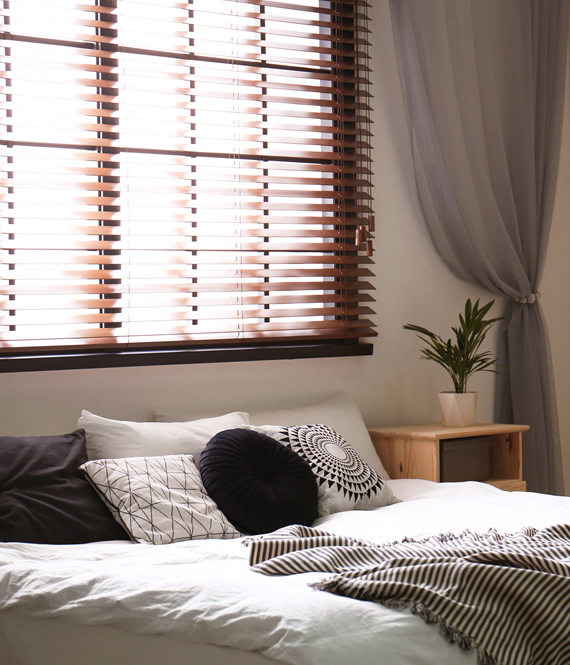
Blinds VS Curtains: Choosing the Right Fit for Your Home
We recommend helpful products in our articles. Read our full disclosure here. The content on this website is not intended to be a substitute for professional advice, diagnosis, or treatment.
“When it comes to blinds VS curtains, how do I choose the most optimal, healthy and practical option for my home?”
Window treatments are an often overlooked but pivotal component of home decor, blending functionality with aesthetics to set the tone of a room.
Whether it’s the soft elegance of a curtain billowing in a gentle breeze or the sleek, modern precision of a blind controlling sunlight, these choices impact our daily lives in subtle yet significant ways.
Beyond the visual appeal, blinds and curtains play a crucial role in regulating the light that enters our homes, ensuring privacy, and even influencing room temperatures.
As homeowners or renters stand before the decision of choosing between blinds and curtains, understanding the distinct advantages and aesthetics of each can greatly inform their final selection, ensuring harmony between practicality and personal style.
The Basics of Blind Types
1. Vertical blinds
Vertical blinds, with their elongated slats hanging gracefully from a track, are a popular choice for sliding doors and wide window expanses.
Their design allows for effortless adjustment, making it easy to control the amount of light entering a room.
The vertical orientation not only adds a touch of contemporary elegance but also can make ceilings appear taller, lending a sense of heightened space.
2. Venetian blinds
Timeless in their appeal, Venetian blinds feature horizontal slats, usually made of wood, faux wood, or metal, that can be tilted to regulate light and privacy.
These blinds are versatile, suitable for various interior decors, and offer a neat, compact appearance when raised.
Their design provides homeowners with the flexibility to adjust lighting levels with precision.
3. Roller blinds
Simple, sleek, and modern, roller blinds are a continuous piece of fabric that rolls onto a tube at the top of the window.
With a pull of a chain or cord, they can be effortlessly raised or lowered, offering a clean and uncluttered look.
Available in a myriad of colors, patterns, and materials, roller blinds can be both functional, as in blackout or sheer options, and highly decorative.
4. Roman blinds
Roman blinds are a classic window treatment that combines the functionality of blinds with the soft appearance of drapery.
As they are raised, the fabric gathers into neat, horizontal folds, offering a luxurious aesthetic.
They are often crafted from fabric or woven materials, making them an excellent choice for adding warmth and texture to a room’s decor.
The Basics of Blind Materials
1. Wood
Natural wood brings an organic, warm, and timeless elegance to window treatments.
Its grain patterns and rich tones can add a touch of rustic charm or upscale sophistication, depending on the finish and design.
Beyond its aesthetic appeal, wood offers good insulation properties, making it efficient at maintaining room temperatures.
However, it’s worth noting that wood can be sensitive to moisture and might not be the best choice for areas like bathrooms or kitchens where humidity levels are higher.
2. Faux Wood
Faux wood blinds capture the visual appeal of natural wood but come with the added advantage of durability and resistance to moisture.
Often made from PVC or composite materials, they are an excellent choice for spaces that experience varying temperatures or higher humidity, such as bathrooms, garages, or kitchens.
They tend to be more cost-effective than genuine wood blinds, making them a popular choice for those wanting the wood aesthetic without the associated price tag or maintenance concerns.
3. Aluminum
Lightweight, durable, and sleek, aluminum blinds offer a modern touch to any space.
They are moisture-resistant, making them suitable for various environments, including kitchens and bathrooms.
Available in a range of colors and finishes, from matte to glossy, they can be tailored to fit diverse interior design themes.
Additionally, aluminum blinds are typically more affordable and easier to clean, representing both style and practicality.
4. Fabric
Fabric window treatments introduce a softness and versatility to room decor.
They come in an endless variety of colors, textures, patterns, and weights, allowing homeowners to choose the perfect match for their aesthetic preferences and functional needs.
From sheer materials that delicately filter sunlight to thicker blackout fabrics that provide privacy and light control, fabric blinds and curtains can dramatically influence a room’s ambiance.
Their porous nature also offers some degree of sound dampening, adding to the overall comfort of a space.
The Benefits and Drawbacks Of Blinds
Blinds are celebrated for their precise control over light and privacy.
With adjustable slats or panels, they allow homeowners to fine-tune the amount of sunlight entering a space, enabling environments to shift from bright and airy to dim and private with just a simple adjustment.
This level of control is particularly beneficial for spaces like home offices or entertainment rooms, where screen glare or privacy might be of concern.
Moreover, blinds, especially those made from materials like aluminum or faux wood, tend to be more durable and moisture-resistant.
This makes them an ideal choice for humid environments like kitchens or bathrooms.
The streamlined appearance of blinds also suits modern and minimalist interior designs, offering a neat and orderly aesthetic.
However, blinds do come with their own set of limitations.
While they offer a contemporary appeal, they may not provide the warmth or coziness that curtains or drapes can introduce to a room.
In colder climates or during wintertime, blinds might not offer as much insulation as fabric-based window treatments, potentially leading to increased heating costs.
Cleaning blinds, especially those with horizontal slats, can be more labor-intensive as dust tends to settle between each slat, requiring individual cleaning.
Furthermore, the mechanisms in blinds, such as cords or chains, can wear out or break over time, necessitating repairs or replacements.
Lastly, while they’re adept at controlling light, blinds might not always offer the same depth of room-darkening as blackout curtains, potentially allowing more light seepage.
The Different Types Of Curtains
1. Sheer curtains
Light, airy, and ethereal, sheer curtains are the epitome of delicate elegance in window treatments.
Crafted from translucent fabrics, such as voile or chiffon, they allow a significant amount of natural light to filter through while providing a basic level of privacy.
Often used in living rooms or dining areas, they create a soft and dreamy ambiance, beautifully diffusing sunlight and casting subtle shadows.
Their lightweight nature makes them perfect for layering with other types of curtains or blinds, allowing homeowners to adjust light and privacy levels with ease.
2. Blackout curtains
Designed specifically to block out nearly all external light, blackout curtains are the go-to option for those seeking optimal darkness and privacy.
Made from densely woven fabrics or featuring a light-blocking liner, they are particularly beneficial in bedrooms, home theaters, or any space where eliminating light intrusion is paramount.
Aside from their light-blocking capability, they also provide an additional layer of insulation, helping to regulate room temperatures and potentially reduce energy costs.
3. Thermal curtains
Engineered for energy efficiency, thermal curtains have a specialized lining that aids in regulating indoor temperatures by acting as a barrier to both heat and cold.
This makes them especially valuable in extreme climates or during harsh seasons, helping homes stay warmer in the winter and cooler in the summer.
By reducing the need for heating or cooling, these curtains can also lead to energy savings over time.
Beyond their functional benefits, thermal curtains come in various styles and colors, ensuring that homeowners don’t have to sacrifice aesthetics for functionality.
4. Drapes
Drapes, often confused with curtains, are heavier, lined window treatments that typically extend to the floor, adding a touch of grandeur and formality to spaces.
Their weight and fullness introduce a sense of luxury, making them a favored choice for elegant living rooms, formal dining rooms, or master bedrooms.
Available in a plethora of fabrics, from lush velvets to ornate brocades, drapes can be both decorative and functional.
Their thicker material and lining not only enhance the room’s aesthetic but also provide sound dampening, insulation, and improved light control.
Common Curtain Materials and Patterns
1. Cotton
Cotton is one of the most versatile and widely used materials for curtains due to its adaptability and ease of maintenance.
Breathable and lightweight, cotton curtains drape beautifully and offer a casual, relaxed look suitable for various room styles.
They can be easily dyed, allowing for a broad spectrum of colors, and their smooth texture provides an ideal canvas for printed patterns and designs.
Additionally, cotton curtains are easy to launder, ensuring longevity and freshness over time.
2. Linen
Linen curtains exude an organic, airy charm, making them perfect for creating a breezy and relaxed ambiance.
Derived from the flax plant, linen is naturally lustrous and has a unique textured weave that adds depth and character to window treatments.
While they filter light beautifully, giving rooms a soft glow, they may wrinkle more easily than other fabrics.
However, for many, these natural creases enhance the rustic and earthy allure of linen.
3. Velvet
Synonymous with opulence and luxury, velvet curtains bring depth, warmth, and richness to any space.
Their plush texture captures and reflects light in a way that can make rooms feel more intimate and cozy.
Ideal for formal settings or bedrooms, velvet also boasts excellent insulation properties, effectively blocking out light and external noises.
While they are sumptuous to the touch and a feast for the eyes, velvet curtains require careful maintenance to preserve their sheen and texture.
4. Silk
Renowned for its lustrous sheen and smooth finish, silk is the epitome of elegance when it comes to curtain materials.
Naturally delicate and lightweight, silk curtains drape gracefully, introducing a touch of refined sophistication to interiors.
While they offer an unparalleled aesthetic appeal, silk is sensitive to sunlight and may degrade or fade over time.
As a result, many homeowners opt for silk blends or use protective linings to prolong the life and vibrancy of silk curtains.
Variety of Colors, Designs, and Prints in Curtains
The realm of curtain designs is as vast and varied as one’s imagination.
From bold geometric patterns that make a statement to subtle pastel hues that soothe the senses, the options are endless.
Floral prints can evoke a country charm, while abstract designs may resonate with contemporary spaces.
Ombre effects, hand-painted details, and even thematic prints like nautical or tropical can set the mood for a room.
This plethora of choices allows homeowners to express their individuality, ensuring that window treatments not only serve a functional purpose but also tell a story or evoke a desired emotion.
The Benefits and Drawbacks of Curtains
Curtains, with their fluid drapery and a vast range of design possibilities, bring a unique blend of functionality and aesthetics to a space.
One of their primary benefits is their ability to add warmth and coziness to a room, softening the hard edges of windows and creating a more inviting ambiance.
Their fabric nature often provides sound-dampening qualities, reducing external noises and creating a more serene indoor environment.
Additionally, curtains offer homeowners an unparalleled opportunity to infuse personal style into their decor, with endless options in terms of color, pattern, and texture.
When paired with liners, curtains can also serve specific functional purposes, such as blocking out light or enhancing insulation, making them both beautiful and practical.
However, curtains come with a set of challenges.
They typically require more regular maintenance than blinds, needing frequent laundering or professional cleaning to keep them looking fresh and free of allergens.
Over time, especially if exposed to direct sunlight, curtain fabrics can fade, changing their aesthetic appeal and potentially weakening the material.
This susceptibility to sunlight makes material choice crucial, with delicate fabrics like silk needing extra care or protective lining.
Additionally, curtains may not always provide the same precise level of light control as blinds, given their design and the fact that they often need to be fully opened or closed to adjust light levels.
In rooms where privacy is a paramount concern, sheer curtains or lighter fabrics might not be the best choice unless layered with other window treatments.
Factors to Consider When Choosing Blinds VS Curtains
Selecting the right window treatment is more than just a matter of aesthetics; it’s about marrying form with function in a way that resonates with the unique needs and style of the household.
One of the primary considerations should be the purpose of the room.
Bedrooms, for instance, often require a higher degree of light control and privacy, making blackout or thermal curtains, or blinds, a more fitting choice.
In contrast, living rooms or sunrooms might benefit from lighter, more translucent materials that maximize natural light.
The room’s exposure to sunlight is also critical.
South or west-facing windows that receive intense sunlight might call for UV-protective or insulating window treatments to prevent fading of interiors and manage room temperatures.
Equally important is the maintenance aspect.
Households with children, pets, or allergy sufferers might prioritize ease of cleaning and hypoallergenic materials.
Durability is another consideration, especially in high-traffic areas or rooms with fluctuating humidity levels, such as bathrooms and kitchens.
Beyond functionality, the aesthetic direction of the room or the entire home will heavily influence the choice.
Contemporary, minimalist designs might lean towards sleek blinds or neutral-toned curtains, while more traditional or eclectic spaces could embrace lush drapes or patterned curtains.
Ultimately, budget constraints will also play a role, making it essential to find a balance between desired features, aesthetic appeal, and affordability.
Innovations and Trends
The world of window treatments has seen significant advancements and shifts, both in terms of technology and design aesthetics.
Technological innovations have paved the way for smart blinds and curtains that can be controlled using remote controls, mobile apps, or even voice commands via smart home systems.
These motorized window treatments offer convenience, allowing homeowners to adjust light and privacy levels effortlessly and even set schedules for automatic adjustments.
Moreover, there’s an increased emphasis on energy efficiency.
Many modern window treatments now incorporate eco-friendly materials or designs that enhance insulation, helping to regulate indoor temperatures and reduce energy consumption.
From a design perspective, there’s a growing trend towards natural, sustainable materials, reflecting the broader movement towards eco-conscious living.
Linen, bamboo, and other organic materials are gaining popularity, prized for their environmentally friendly credentials as well as their raw, authentic beauty.
Additionally, layered window treatments are becoming a staple in contemporary home decor.
Combining sheers with blackout curtains or pairing blinds with drapes allows for versatile light control and a rich interplay of textures and colors.
Another trend on the rise is the use of bold, statement patterns, especially in otherwise neutral-toned rooms, allowing the window treatments to become a focal point and infuse character into the space.
Blinds VS Curtains: Conclusion
In the timeless debate between blinds and curtains, the choice ultimately boils down to a harmonious blend of personal preference, practicality, and design aspirations.
Each option carries its unique charm and utility, with blinds offering precise light control and modern aesthetics and curtains introducing warmth, style, and a touch of luxury.
As we navigate the ever-evolving world of window treatments, innovations like smart blinds and sustainable materials are reshaping the landscape, allowing homeowners to embrace both functionality and sustainability.
In the end, whether your goal is to create a cozy haven, a sleek and modern retreat, or a harmonious fusion of both, the right choice lies in your hands, guided by the specific needs and desires of your home and the stories you wish to tell through your windows.
"We love to research problems, examine studies, analyze solutions, and share with you ideas that make life healthier. You can learn about us and our editorial standards here. Have suggestions or feedback to share? Send us a message!."



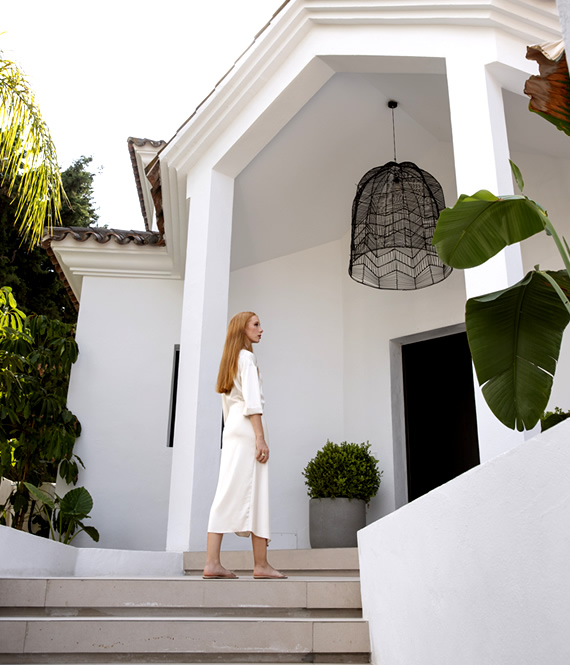
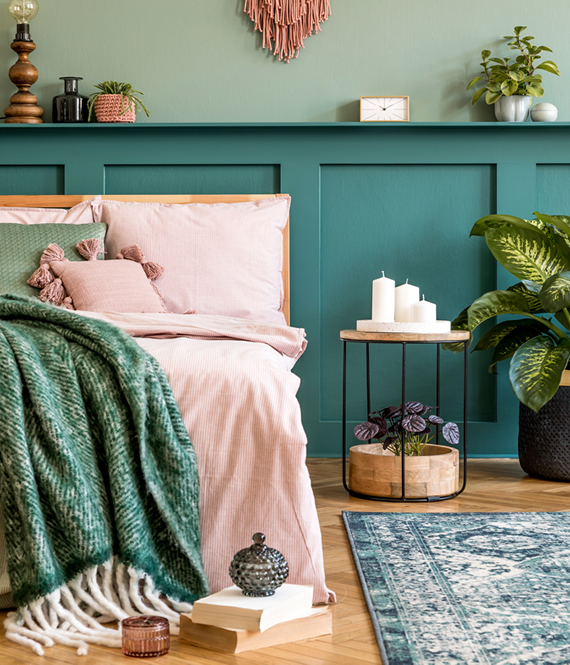
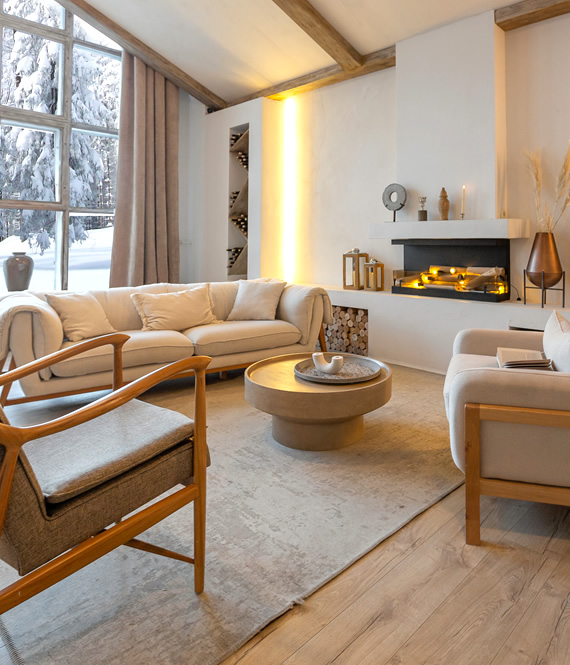
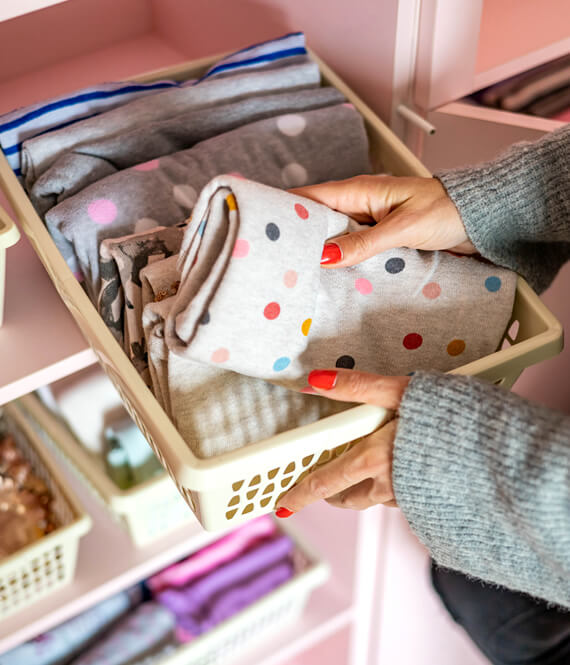

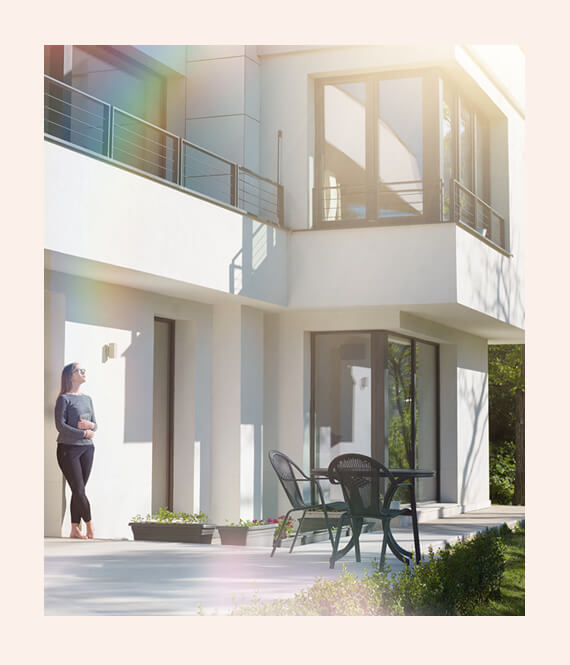
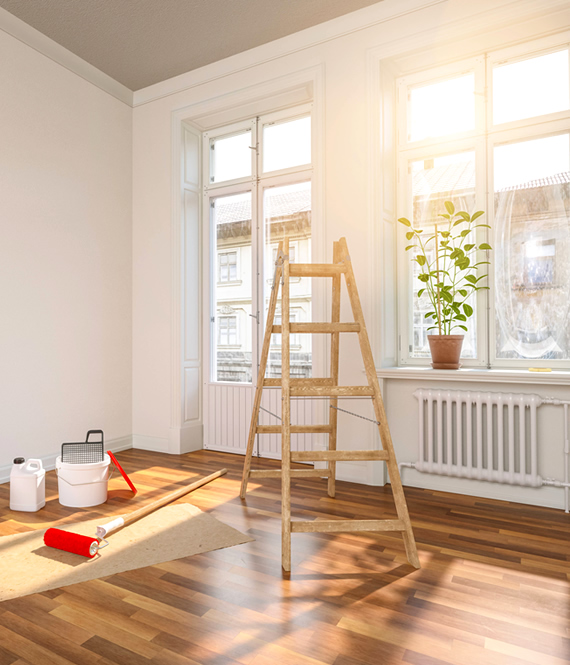
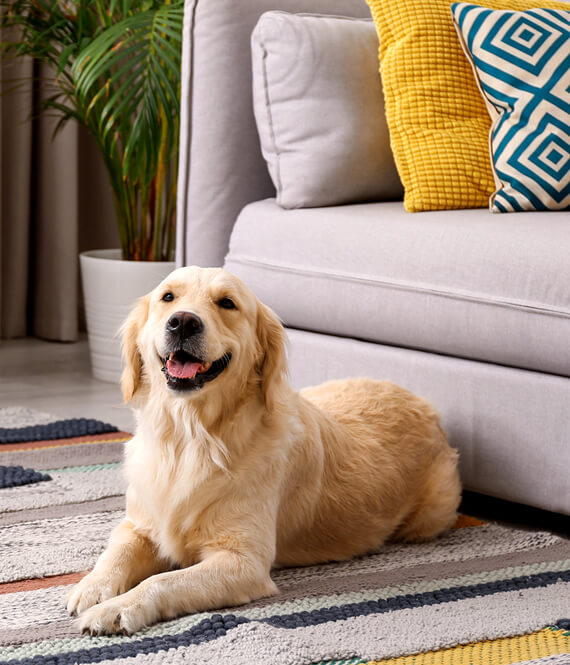


Leave a Comment